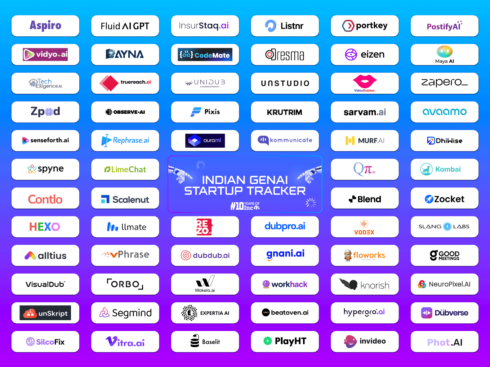
SUMMARY
Startup Failure Can Be Attributed To Various Factors, But There Are A Few possible Tipping Points When Startups Are Able To Build Big Businesses
Startups have seen huge success stories since the past few years, with a few new companies not just hitting it big, but changing the face of business.
But for every successful startup, countless others fail to make it big.
A startup failure can be attributed to various factors. We have tried to analyse the possible tipping point when startups in certain technologies will be able to build big businesses.
BlockChain
Everybody, even the greatest doubters of Bitcoin and different cryptographic forms of money have had good things to say in of support the Blockchain innovation, that has the potential to cause the biggest disruption for any form of transaction. However, it has been a long time since Blockchain technology was built and we are yet to see any major application of it.
It can be argued that as Blockchain is the technology on which Bitcoin is built upon, its major use is as a payment system or, as it has evolved, a store of value. The other use cases for Blockchain like an authenticity verification, a distributed storage, a decentralized trading platform, smart contracts, and as an immutable ledger have all been tried, but not succeeded.
The banking revolution
When cryptocurrencies like Bitcoin emerged as a costless and an instant way to exchange value without the need for a middleman, everybody thought that this will revolutionise banking. However, much to our chagrin, things have not panned out as expected as speculation and greed took over.
Bitcoin, instead of becoming a functional currency took on the mantle of digital gold. The “banking revolution” hype also died down significantly with increase in transaction fees and time taken to consummate, even though the adoption grew worldwide.
Even the banks have started breathing easy as their own fears of being outdone by the digital currency have receded, at least for the foreseeable future.
The underlying Blockchain technology has to be safe and secure for everybody, not only the tech-savvy people. The government-backed banking systems provides various forms of securities like FDIC guarantees, reversibility of ACH, identity verification, audit standards, and there is an investigation system if things go wrong which are not currently addressed in cryptocurrencies.
Recent hacks like Bitfinex or Coincheck, show that it is still not safe to trade cryptocurrencies, especially for those who are not tech savvy and most vulnerable, as they leave themselves open to the higher risk of getting hacked and spammed.
One of the other major challenges a blockchain based service has to address is the scalability. The challenge to handle thousands of transactions per second for the entire system and replicate the entire ledger in every node in the network is enormous.
There are also multiple distributed ledger platforms powering digital business and laying the foundation for the programmable economy. Though the road to programmable economy is long one until there is a unified framework similar to what TCP/IP did for the entire internet ecosystem.
Other use cases like smart contracts are also interesting as it creates a worldwide computing network that could totally eliminate the need for centralised third-parties. However, smart contracts still have a long way to go as the recent DAO incident proved that smart contracts can still be fooled.
Everyone believes that Blockchain can be made to fit into almost any sector of modern life, however, even after almost 10 years since the inception of Blockchain technology, there is no one sector where it has taken over and threatened the incumbents.
The ideas of its application are great, but the execution of this game changing technology is still too slow. There are about 9 blockchain companies which have received a funding of USD 100 Mn+ but still are at an early stage of product development.
Artificial Intelligence (AI)
While AI is finding an adoption in different businesses including ecommerce, health tech, edtech, fintech etc., it has faced some unique challenges. There are a number of startups that claim to use AI, but, sadly few will make the cut and build sustainable businesses.
One of the biggest challenges is clearly identifying whether the business is actually using AI to solve problems. While most of the companies may be using Machine Learning, it doesn’t necessarily qualify to be an AI company.
In order to qualify, the system should be based on self-learning algorithms, and be able to make its own decisions with constant self-improvement. In order to succeed an AI system, there should be a right mix of other technologies like NLP, Deep Learning and related tech, which most startups into the AI space fail to acknowledge.
Further, every AI startup demands more tech-focused founders with skills in physics, maths, cognitive, computer science, who can build complex models with a lot of math and problem-solving skills. It takes enormous patience to build an AI company, partciularly when the talent is scarce. The Big 5 in Silicon Valley offer top dollar for this talent which few startups can afford.
As right team is core for scaling the system, (un)availability of talent is a big deterrent in scaling up the AI startup.
It is also important to have a deep understanding of potential customers in order to understand their problems and get their data. Access to data is the key. Once the data is available, it has to be cleaned, structured and labeled. Without properly structured data the models cannot be trained. If the data is not of sufficient quality, it needs a lot of capital and time to fix it with human labour.
AI has a lot of potential in every sector but needs more visibility of where to start with an application. AI startups also have long gestation cycle and it can normally take upto two years before the revenue starts trickling in. There is a need to bridge the gap between theoretical idea and real product application.
Autonomous Vehicles is one of the verticals where AI is expected to have the maximum impact. Over USD 7 billion is already invested in the space by top VCs and giant car manufacturers, but AI in autonomous technology is still where computing was in the 60s.
This means that while the technology is nascent, it is not modular, and it is yet to be determined how the different parts will fit together. The recent accidents of Tesla vehicle or Uber’s crash show that developing an AI-based system that can be manufactured and deployed at scale with cost-effective, maintainable hardware is challenging.
Large sets of data are critical to train the AI models as the impact of failures is fatal. Companies including Waymo, GM, Lyft, Uber, and Intel, and even the car rental firm Avis, have recognized this and formed partnerships with potential rivals, sharing data and services in the quest to build a real autonomous vehicle, and the infrastructure that will support it.
Over the past few decades, AI has seen cycles of hype and disillusionment, but has recently started gaining momentum in the business world. There is no dispute on its ability to better serve customers.
A well-established business does not change overnight, especially when it involves technology that is difficult to understand and perceived as a threat by the people it is intended to help. Building and deploying AI systems requires a sound strategy around desired business outcomes, targeted use cases, data assets, algorithms, high-scale computing, process integration, change management, incentive alignment, executive support and accountability.
Though it’s at an interesting crossroad, it is becoming a commonplace in our everyday lives be it navigation, or personal assistants like Siri and Alexa.
Mixed Reality
Virtual reality and Augmented reality are other two big tech disruptions which have been around for a while now. A lot of startups are trying to be a part of the next VR revolution and many others are expected to come since the projected expectation for AR/VR market is huge.
Virtual Reality emergence had started in 2012, credit to Palmer Luckey’s Kickstarter campaign for the Oculus Rift device. Since then, VR ecosystem started flourishing and the technology started getting a lot of attention. Research firms started forecasting big numbers for the upcoming years and it reached the peak of hype cycle.
In reality, though, the VR market has continuously grown but has never reached that expected big numbers. All major technology companies are currently betting on it, be it Microsoft, Google, Facebook, Apple or Valve. John Riccitiello, the CEO of Unity said that VR will start to take off in 2019 but as we see we are still couple of years from the disruption.
One of the major reason for this slower growth than expected is that the price of VR is very high. High-quality VR head mount devices like Oculus Rift, HTC Vive are too expensive ($600-900) and will need to be powered by a powerful PC to offer a decent experience. Adding to the same the VR-ready PCs are expensive too ($1000) and the compounded cost of experience prohibits adoption.
The virtual simulations available today are also not perfect. The emulation of the visual experience in VR is not great and user’s brain is still able to see pixel and understand that it is not real. Also, existing HMDs require the user to mount external cameras, calibrate systems and handle lots of cables. This is hard for a generic customer to use.
Another major factor is the content, which is very poor. There are currently no AAA-games for virtual reality. Most of the available games are from indie studios which are made from the help of headset producers to grow the market.
For VR to take of VR hardware prices has to come down drastically. This will attract buyers which in turn will entice more software producers and only after it reaches a critical mass, will big studios find it interesting to start creating high-quality applications. There are still challenges to adoption like simulation sickness, space in the house or (dis)comfort of users to have headset strapped on their face for hours.
In our view, VR will find more adoption in B2B areas before B2C kicks in. There are compelling use cases in Training, MRO, Health Care that can be addressed through VR.
Mobile VR which is expected to address the challenges of price, mass adoption, ease of use etc. has its own constraints. The most obvious and well-discussed challenge facing mobile virtual reality applications is the much more limited power budget and thermal constraints when compared to its desktop PC equivalent.
Although mobile Chips can pack in a decent octa-core CPU arrangement and some notable GPU power, it’s not possible to run these chips at full tilt, due to both the power consumption and thermal constraints mentioned previously.
As the VR industry expands, one of the brightest spots could be what is called “standalone” headsets. These are devices that are neither tethered nor connected to a smartphone. Rather, they have integrated computing and communications systems. Both Google and GameFace Labs are thought to be working on such systems.
Companies like Nvidia, ARM, AMD are already working on memory bandwidth which is limited on un-tethered device. Their integrated GPU’s can save 50% bandwidth using compression technologies. Also, the arrival of the next generation of mobile network, widely referred to as 5G, will unlock the full potential of VR and AR technology.
Current 4G network standards severely curtail the proliferation of VR/AR, thanks to limitations in bandwidth, latency, and uniformity. High-quality VR and AR experiences require a lot of data to be processed. This is fine for local applications, but if the data is fed remotely it can place a strain on a network.
This is where 5G’s significantly faster speeds and lower latency will come to the rescue. Experts anticipate that 5G will bring about a 10X improvement in throughput, a 10X decrease in latency, a 100X improvement in traffic capacity, and a 100X improvement in network efficiency over 4G.
Augmented Reality which has some technology overlap with VR is different from VR and serves different purposes. Augmented Reality is predicted to completely change our way of life, as it is expected that it could make us shift from smartphones to wearing a pair of AR glasses.
It needs to be mentioned that the present generation of AR glasses is premature and unusable for customers. Technology wise it is way behind VR but as it does not have content challenges it can be expected that once the technology is mature we could see much faster adoption.
To conclude, these technology disruptions have a lot of potential to change human life in a significant way. In a digital era where data is fueling most of the innovation, companies have to be extra responsible on issues like data privacy. Recent incidents involving Facebook and Cambridge Analytica regarding unauthorized use of personal information has led to the world-wide debate over dark side of innovation.
China is becoming a powerhouse for AI technologies as their companies have access to huge amount of data without any regard to privacy. In addition, a large domestic market will ensure that Chinese startups will scale rapidly and may threaten the world order. On the other end of the spectrum is the EU which places a premium of personal data privacy that is reflected in the GDPR regulation.
However, all major countries have started talking about their own data privacy laws but there are still grey areas about data ownership and liability which will take some time to evolve. One, therefore, hopes that a right balance is struck between regulators, innovators, and public to ensure that these technologies realise their potential and build big businesses.
[This article is co-authored by Shailesh Ghorpade, Managing Partner and CIO of Exfinity Venture Partners and Mohit Babu, Associate of Exfinity Venture Partners.]


























